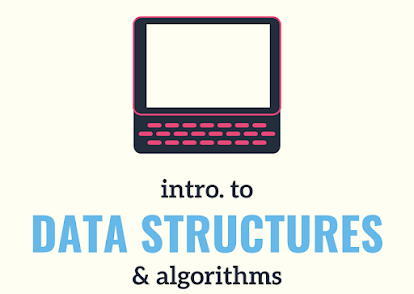 |
| Data Structure and Algorithm |
Introduction to Data Structures and Algorithms (DSA)
Data Structures and Algorithms (DSA) are the backbone of
programming and problem-solving. Learning DSA helps you write efficient code
and understand how computers handle data. Let's break it down in the simplest
way:
What is a Data Structure?
A Data Structure is a way of organizing and storing
data so you can access and use it effectively. Think of it as a container, like
a box or a cupboard, where you keep things in an organized manner.
Examples of Data Structures:
- List:
A collection of items arranged in order (like a shopping list).
Python Example:
shopping_list
= ["milk", "bread", "eggs"]
print(shopping_list[1]) # Output: bread
- Stack:
Items are added and removed in the "Last In, First Out" (LIFO)
order (like a stack of plates).
Python Example:
stack = []
stack.append(10) # Add item
stack.append(20)
print(stack.pop()) # Remove and print the last item (20)
- Queue:
Items are added at one end and removed from the other ("First In,
First Out" or FIFO, like a line of people).
Python Example:
from
collections import deque
queue =
deque(["Alice", "Bob", "Charlie"])
queue.append("David") # Add item
print(queue.popleft()) # Remove and print the first item (Alice)
- Dictionary:
Stores data in key-value pairs (like a real dictionary).
Python Example:
phone_book = {"Alice":
"12345", "Bob": "67890"}
print(phone_book["Alice"]) # Output: 12345
What is an Algorithm?
An Algorithm is a step-by-step procedure or set of
rules to solve a problem. It's like a recipe with clear instructions to achieve
a specific goal.
Example of an Algorithm:
Task: Find the largest number in a list.
Steps:
- Start
with the first number.
- Compare
it with each subsequent number.
- Keep
track of the largest number.
- Return
the largest number.
Python Implementation:
def find_largest(numbers):
largest = numbers[0]
for num in
numbers:
if num >
largest:
largest =
num
return largest
nums = [3, 7, 2, 9, 5]
print(find_largest(nums))
# Output: 9
Why Learn DSA?
- Efficient
Code: Write programs that run faster and use less memory.
- Problem-Solving
Skills: Crack coding interviews and solve real-world problems.
- Better
Understanding: Know how software and systems work under the hood.
Key Data Structures in Python
- Arrays
(Lists in Python): Store elements of the same type.
- Linked
Lists: A sequence of nodes, where each node points to the next.
- Stacks
and Queues: For managing items in LIFO or FIFO order.
- Hash
Tables (Dictionaries in Python): Quick lookups by key.
- Trees:
For hierarchical data (like file systems).
- Graphs:
For connected data (like social networks).
Key Algorithms in Python
- Sorting
Algorithms: Arrange data in order (e.g., Bubble Sort, Quick Sort).
- Searching
Algorithms: Find elements (e.g., Binary Search).
- Recursion:
Solve problems by breaking them into smaller sub-problems.
- Dynamic
Programming: Optimize solutions by reusing previous results.
How to Start with DSA in Python?
- Learn
Python Basics: Understand variables, loops, functions, and modules.
- Practice
with Simple Problems: Start with lists, dictionaries, and loops.
- Explore
Libraries: Use Python libraries like collections for advanced
structures.
- Solve
Problems: Use platforms like LeetCode, HackerRank, or Codeforces.
Example: Combining Data Structures and Algorithms
Problem: Find the sum of even numbers in a list.
Python Code:
def sum_of_evens(numbers):
return sum(num for
num in numbers if num % 2 == 0)
nums = [1, 2, 3, 4, 5, 6]
print(sum_of_evens(nums))
# Output: 12
Tips for Beginners
- Start
Small: Focus on simple concepts like lists and loops.
- Visualize:
Draw diagrams for data structures like stacks or trees.
- Code
Daily: Practice regularly to build confidence.
- Ask
Questions: Why does this algorithm work? Can it be faster?
🚀🚀🚀🚀🚀🚀🚀🚀🚀🚀🚀Happy coding! 🚀🚀🚀🚀🚀🚀🚀🚀🚀🚀🚀🚀





No comments:
Post a Comment